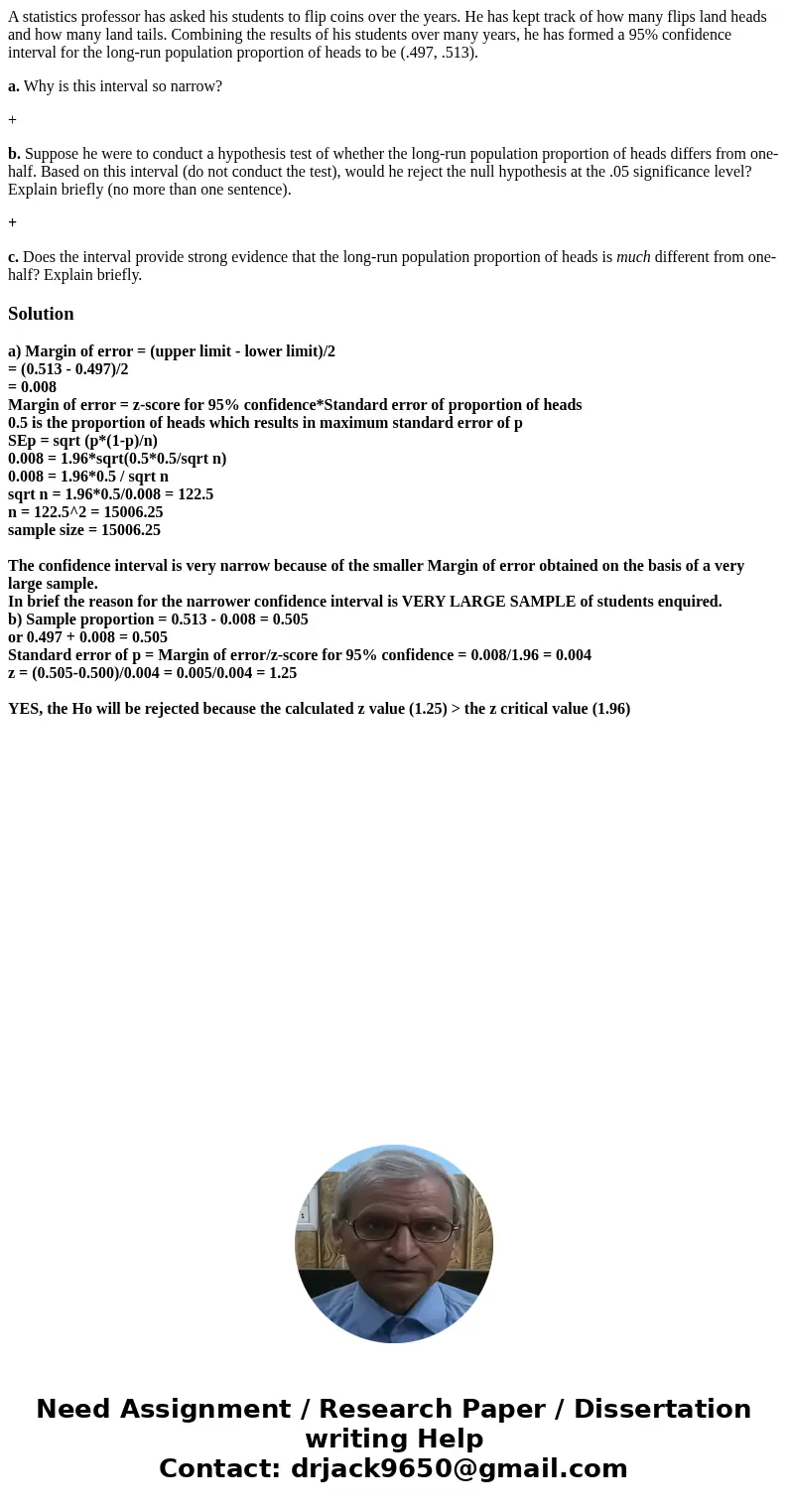A statistics professor has asked his students to flip coins
A statistics professor has asked his students to flip coins over the years. He has kept track of how many flips land heads and how many land tails. Combining the results of his students over many years, he has formed a 95% confidence interval for the long-run population proportion of heads to be (.497, .513).
a. Why is this interval so narrow?
+
b. Suppose he were to conduct a hypothesis test of whether the long-run population proportion of heads differs from one-half. Based on this interval (do not conduct the test), would he reject the null hypothesis at the .05 significance level? Explain briefly (no more than one sentence).
+
c. Does the interval provide strong evidence that the long-run population proportion of heads is much different from one-half? Explain briefly.
Solution
a) Margin of error = (upper limit - lower limit)/2
= (0.513 - 0.497)/2
= 0.008
Margin of error = z-score for 95% confidence*Standard error of proportion of heads
0.5 is the proportion of heads which results in maximum standard error of p
SEp = sqrt (p*(1-p)/n)
0.008 = 1.96*sqrt(0.5*0.5/sqrt n)
0.008 = 1.96*0.5 / sqrt n
sqrt n = 1.96*0.5/0.008 = 122.5
n = 122.5^2 = 15006.25
sample size = 15006.25
The confidence interval is very narrow because of the smaller Margin of error obtained on the basis of a very large sample.
In brief the reason for the narrower confidence interval is VERY LARGE SAMPLE of students enquired.
b) Sample proportion = 0.513 - 0.008 = 0.505
or 0.497 + 0.008 = 0.505
Standard error of p = Margin of error/z-score for 95% confidence = 0.008/1.96 = 0.004
z = (0.505-0.500)/0.004 = 0.005/0.004 = 1.25
YES, the Ho will be rejected because the calculated z value (1.25) > the z critical value (1.96)

 Homework Sourse
Homework Sourse